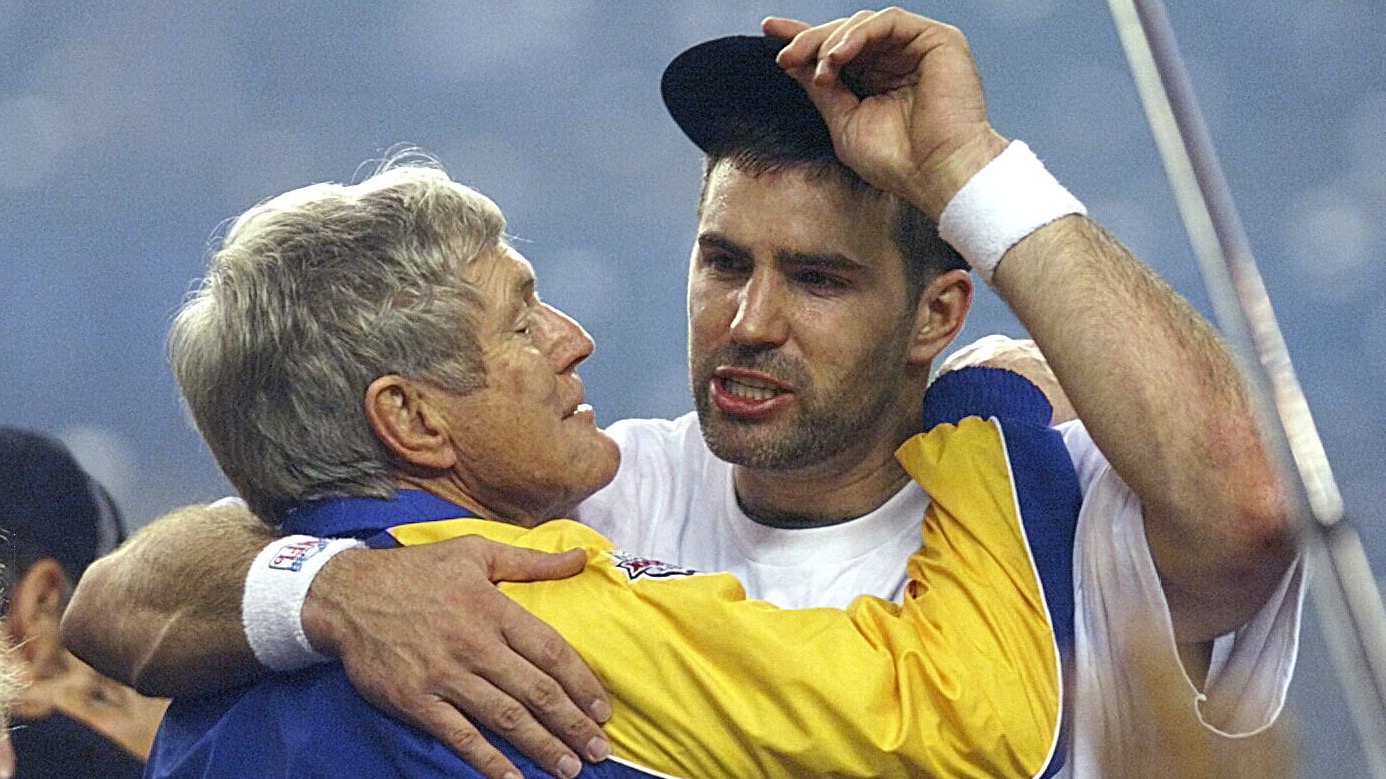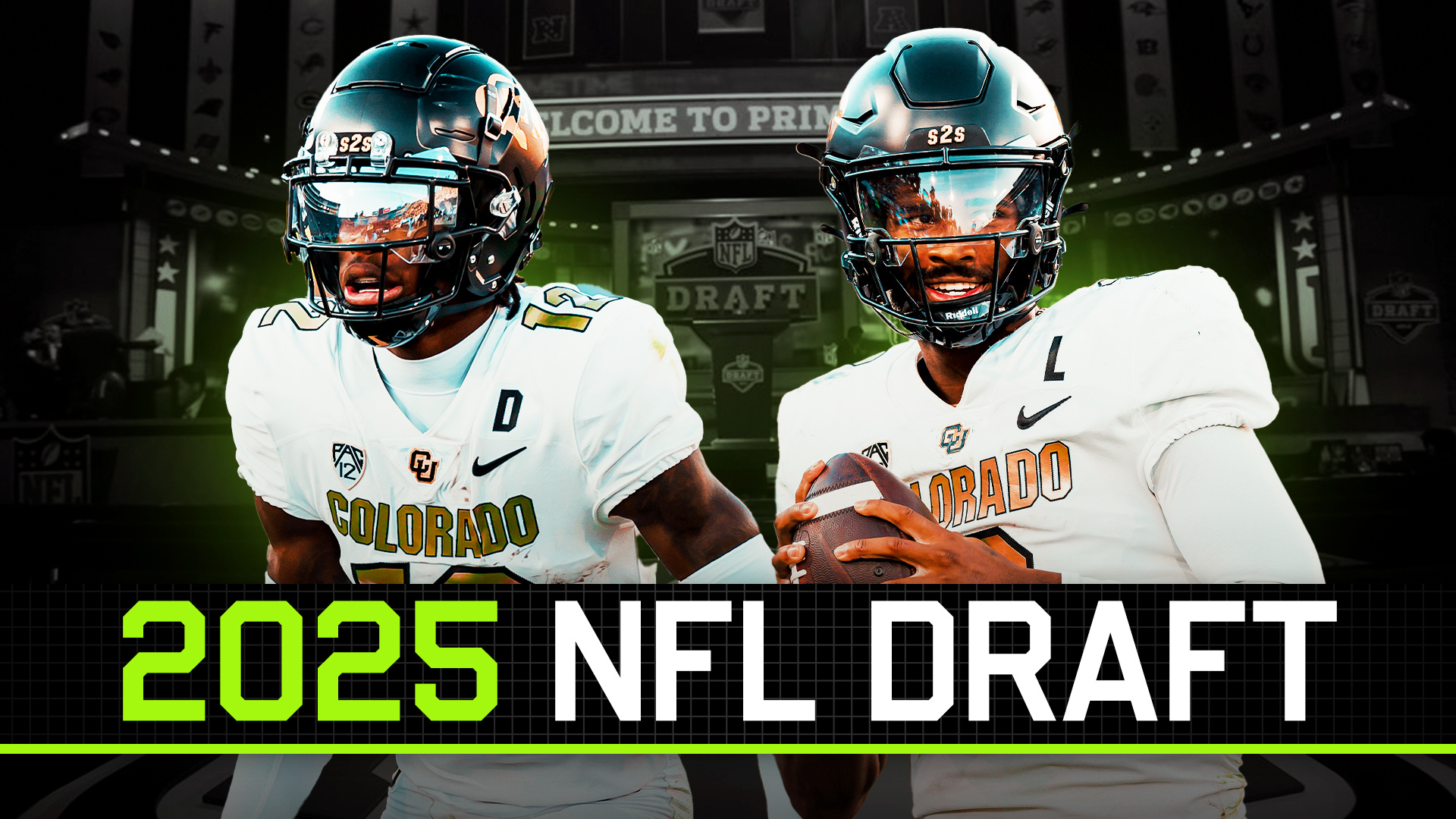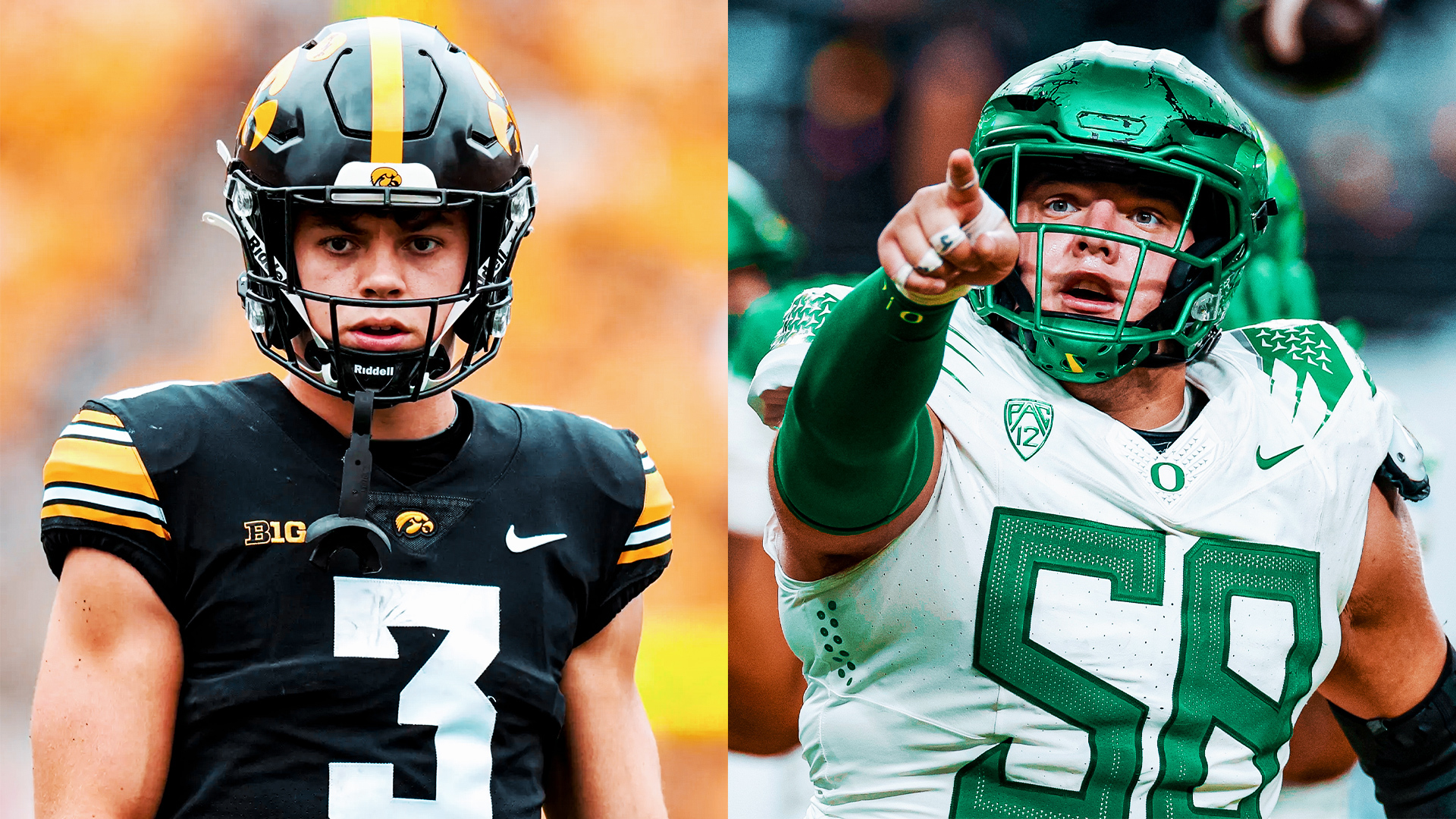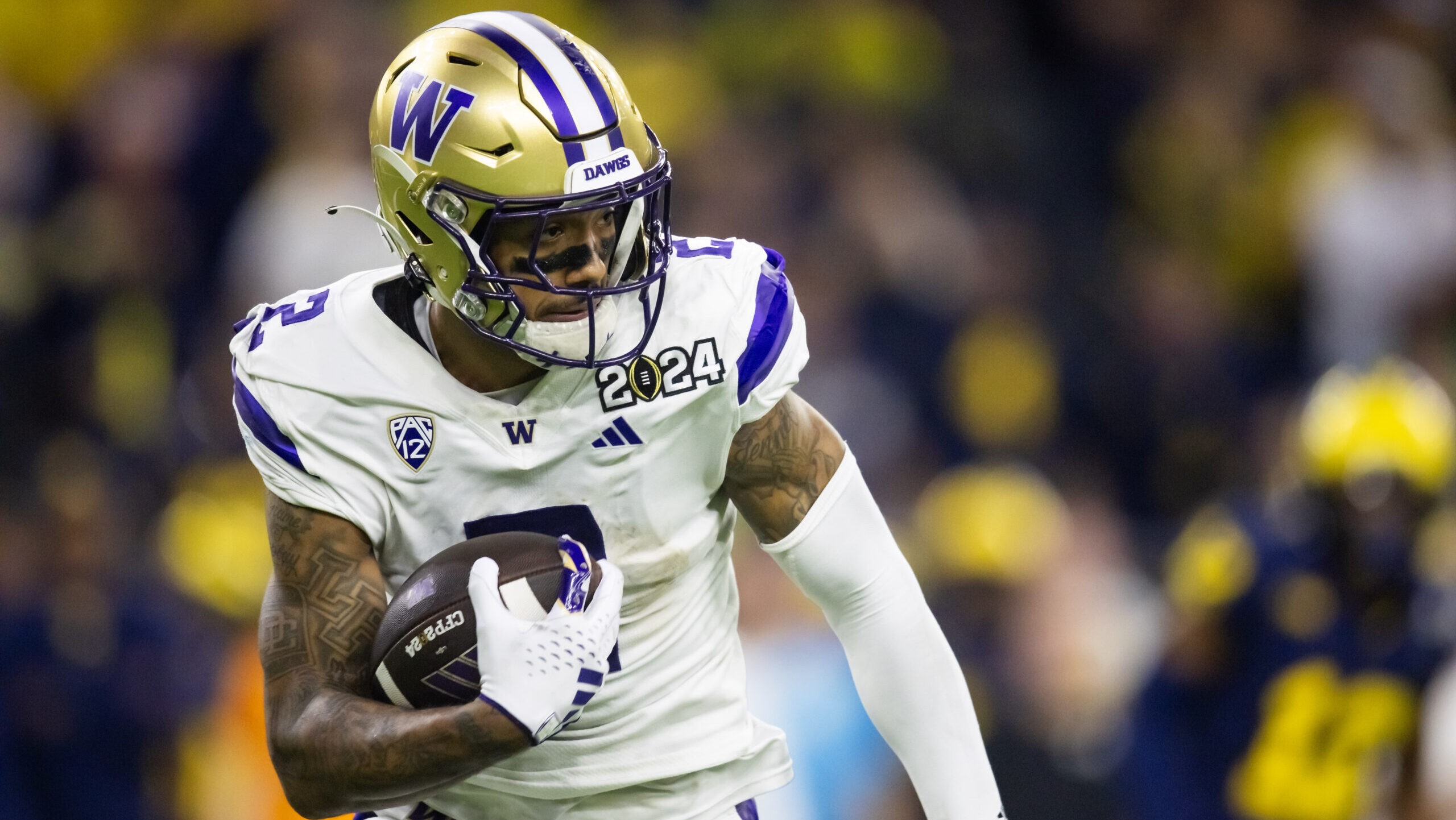Analysis
4/9/23
9 min read
Size Isn’t Only Concern in Elite Playmaker Bryce Young’s Game
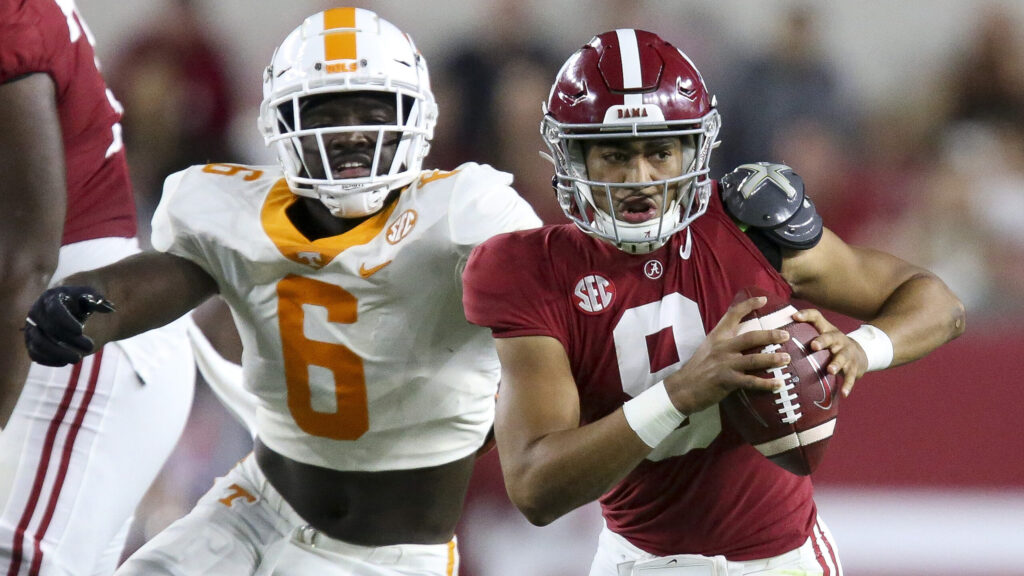
Former NFL head coach and offensive guru Marc Trestman is evaluating the top quarterbacks in the 2023 NFL Draft. This is the sixth in a series of his evaluations.
Others in the Series:
After watching five of the top quarterbacks in the 2023 NFL Draft class, it was time to take a look at Alabama quarterback Bryce Young (scouting report), who consistently has been projected as a top-five pick for the better part of the past year.
Young is the next in a long line of Crimson Tide quarterbacks who will be in the NFL, but his game is unique compared to recent Alabama picks such as Mac Jones, Tua Tagovailoa or even Jalen Hurts.
Bryce Young Evaluation
2022 Games Watched
- LSU
- Tennessee
- Auburn
- Kansas State
Bryce Young’s Credentials
During his three-year college career, Young put together a strong statistical resume with two years as a starter under the tutelage of former NFL head coach and current Patriots offensive coordinator Bill O’Brien.
Young completed 65.8 percent of his passes for 8,356 yards, 80 passing touchdowns and 12 interceptions during that time. His best season came in 2021, when he won the Heisman Trophy, with a stronger offensive core surrounding him, including offensive tackle Evan Neal and receivers John Metchie and Jameson Williams. He faced more struggles in 2022, as offensive linemen got beat one-on-one, failed to coordinate switches on stunts, and running backs missed their blitz pick-up responsibilities or missed blocks.
NFL teams must be extensive and comprehensive in evaluating quarterbacks, which is certainly the case here. In the four games I watched, Young was under constant pressure and was forced to flee the pocket several times each game. While there was not an abundance of designed movements, naked or bootleg passes that had him throw outside the pocket, there were plenty of examples of Young throwing on the move.
In O’Brien’s NFL-style offense, Young showed his ability to push the ball down the field with different long-developing concepts. He also walked to the line of scrimmage to change protections or plays and executed full-field reads.
At the NFL Combine, Young weighed in at 204 pounds and measured just over 5-foot-10, though he appeared to play at a lighter weight on tape. While he’s been durable during his career, he is much smaller from the hips down compared to other NFL quarterbacks of similar stature who have been drafted over the years, whether in the first five picks or after the first round.
Unlike other healthy quarterbacks in this class, such as C.J. Stroud (scouting report), Anthony Richardson (scouting report), Will Levis (scouting report) and Dorian Thompson-Robinson (scouting report), Young decided not to throw or participate in drills at the combine. He threw only scripted passes at Alabama's Pro Day leading up to the draft and elected to let his on-field play speak for itself.
Arm Talent, Accuracy
Young's film shows some tremendous throws that get you excited, but there also are inconsistencies that must be addressed.
His stance prior to the snap is more straight-legged, in an acceptable but less-than-ideal athletic position. Unlike most quarterback drops in the shotgun, he often backs out, leading to tipping off his throwing direction while not consistently matching the depths of the routes being run. Young also does not consistently have a strong base, often looking unbalanced with his lower half before the throw or not explosively stepping to throw, leaving his lower half behind and making arm throws with awkward finishes.
At times, he can look somewhat casual with his staging of the football, carrying it low and away from his body when he should have it tight to the sternum and up at the "V’ of the neck. With his low staging and extra steps on his drop, he can be late with timing throws.
In part due to his unpredictable mechanics, Young’s pass location is not as consistent as one would expect when looking at his completion percentage. When throwing with velocity, he does not consistently lead receivers to the ideal spot to maximize RAC, and his upfield throws can be erratic. This showed up against the high-end defensive competition of Tennessee and LSU.
There are more flaws than some would expect with a presumed top-five pick, but when Young puts it all together with sound mechanics, a strong base and good follow-through, he can make all the throws. Even with the correctable flaws Young shows in the pocket, he is still capable of making big-time plays.
He can easily change speeds and trajectories on his passes, throwing with great touch and placement to short areas of the field. He also can make explosive plays with precise deep balls. Whether his mechanics are sound or not, on any given play, Young shows sufficient NFL arm talent and a propensity to get the ball out exceptionally fast with a release that allows him to throw passes with immediacy.
A more athletic stance, proper ball staging on his drops and more disciplined footwork will allow him to be highly productive in the future. All of these considerations and more will go into deciding whether Young is truly a top-five pick.
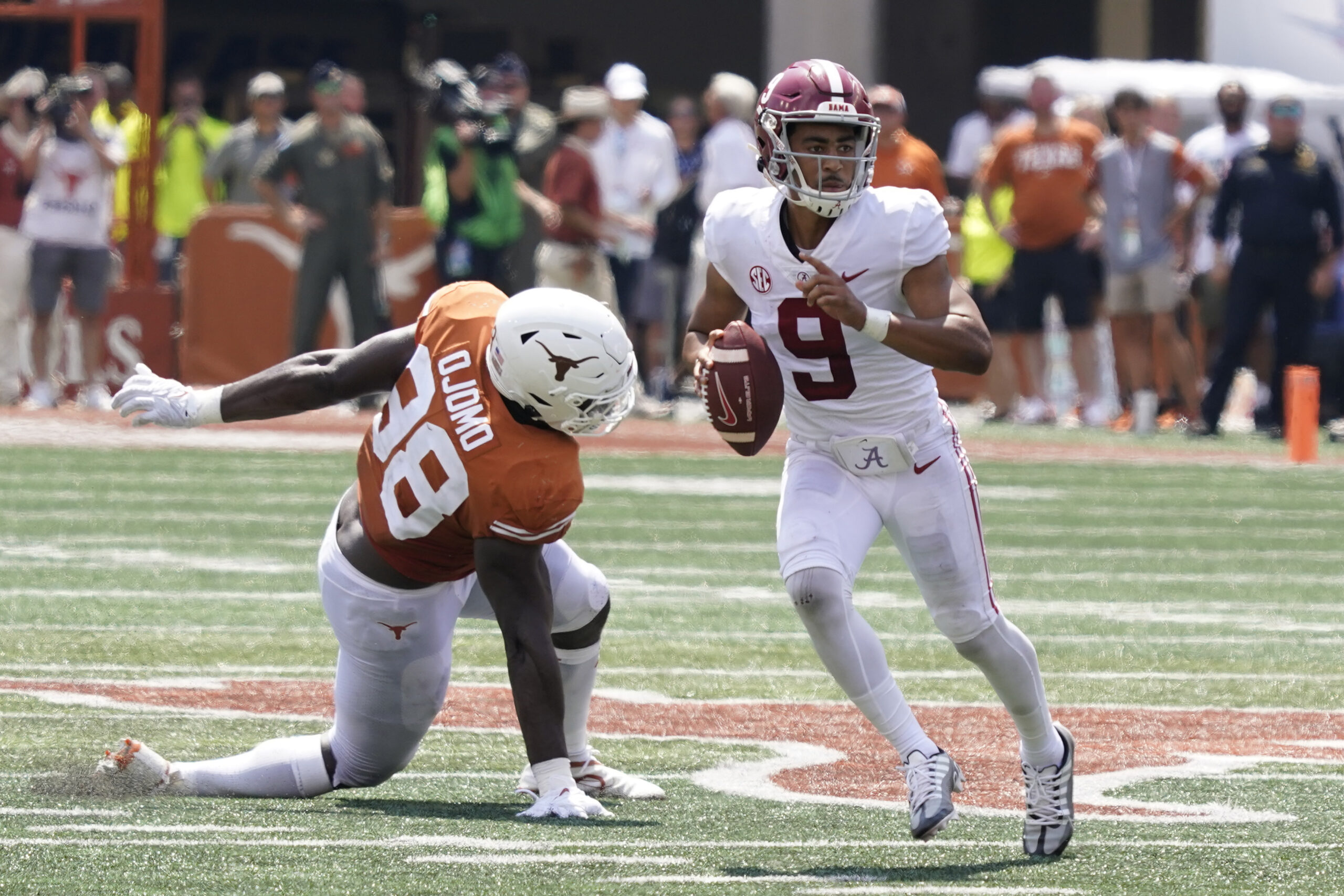
Athleticism, Escapability
The most obvious standout trait in Young’s game is his supreme playmaking ability. He constantly finds ways to make plays under pressure and on the move in either direction. At times, he appears more comfortable in an improvisational state in or outside of the pocket rather than as a rhythm passer in the confines of the pocket.
He was forced to leave the pocket on several occasions in the games I watched due to lapses in pass protection, and in those situations, he consistently avoided defenders and created space to get passes off in or out of the pocket. While maneuvering in the pocket, Young can slide to the quiet areas before flipping his hips and making throws under pressure. He is courageous in the face of pressure, but we also see him exit the pocket prematurely or drift into protection and put himself in harm’s way.
From a defensive perspective, defending his rushing ability will not be a high priority. Defensive coordinators will not look to defend against 11 when facing Young as they do against Justin Fields, Josh Allen or Hurts. His lack of size also will inhibit offensive coordinators from wanting to see him run. Young can run and extend plays but does not appear to be a significant rushing threat. Young does not have the high-level ability of runners in this 2023 class such as Richardson or Thompson-Robinson, but he has sufficient ability to create first downs with his legs.
While running with the ball, Young will need to improve his eye discipline and ball security. At times he was too loose with ball security and surprisingly was not situationally aware, taking a sack that put his team out of field goal range in one instance and taking a sack while on the move instead of throwing it out of bounds on another occasion.
Still, the "it" factor that Young shows as a playmaker will be a separating one when NFL teams stack him next to his contemporaries.
Mental Processing
Young appears advanced from a mental standpoint for a 21-year-old.
His ability to process is visible as he quickly works through progressions and makes immediate decisions. He has excellent anticipation, shows good spatial awareness, can quiet his mind and manage the chaos of the game before kicking the ball out to his flare control. He also showed the trust he has with his coaches, which is evidenced by his freedom to make calls and changes at the line of scrimmage.
While there are many positives in this area, there is still room for growth in his decision-making. The LSU game validated that. When under constant duress, he is prone to forcing throws into coverage, making incorrect reads and taking inappropriate risks, which resulted in a 49 percent completion performance.
Final Thoughts
Young is a prospect with unique strengths and talents, but based on my initial viewing, he has work to do to become a high-level NFL quarterback.
It will be interesting to see if his future coaches try to clean up his stance, staging and drop in the gun. Will Young go to a team that will put him under center (something he did not do at Alabama)? Will his new coaches design movement throws for him to get him outside the pocket? And, even more importantly, will they involve him in the running game as teams do with running quarterbacks?
Of the four games I watched, LSU and Tennessee must be critically evaluated to open the door for serious discussions and projections of Young.
He has a lot of room for development in the pocket with his lower-body mechanics and decision-making, but Young has sufficient arm talent and playmaking ability to grow into an exciting NFL starter. The question will be whether or not he can be a pocket passer typical of top selections in the draft and have the frame to handle the hits he will take on a weekly basis.
Still, there are numerous explosive plays, off-schedule quick decisions and "it" factor moments that give credibility to those seeing him as the first or second quarterback taken in the draft. Regardless of any shortcomings, there is no question Young will be an extraordinary playmaker, tremendous leader and face of an organization.
I am excited to see how he grows and develops and will be closely monitoring what his future offensive coordinator decides to do to maximize his talents.
Marc Trestman is a former NFL, CFL and college coach. After over a decade as an offensive coordinator and quarterback coach in the NFL, he coached in four Grey Cups in the CFL, winning three over seven years with Montreal and Toronto before becoming head coach of the Chicago Bears. Follow him on Twitter at @CoachTrestman.


